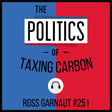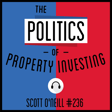
241: The Politics of Authentic Imagery - Jason Malouin
Jason Malouin started his career as a Lighting Designer for live theatre and worked all over the United States for about 5 years. He was obsessed with creating these dramatic, shifting lightscapes for the actors on stage to move through it was replicating something as boring (and tricky) as office light or a laser-pointer-esque, dramatic spotlight. It was super creative and super technical.
Like many people do, Jason came to an unexpected crossroads. He says “One can only do the regional circuit for so long. It was time to move to New York City and commit to that career on a whole new level or do something else entirely. But I knew there was more out there for me.”
What followed was some twists and turns career wise including eight year as a Wilderness Guide all over the USA, Mexico, South America and the Caribbean. Later came photography which is how I know Jason through mutual peers. He has won awards and has a reputation for being a master of the craft for a decade now.
His images are more than art and smarter than a sharp headshot. It is about visually capturing the people he photographs as authentically as he can.
1. How do trust, authenticity, and integrity come together ideally in a photograph?
2. Are there some surefire ways to get to know your subject matter aka humans to capture their true self versus what social media often demands, the ‘vanilla but glossy’ version of ourselves?
3. Does imagery of ourselves need to find ways to evolve– so we can tell a story of our life versus seeking to rely on a single-moment headshot which can be a hero photo – great for LinkedIn etc - but often is staged to make us look more empowered or younger or less vulnerable? How can we do this better and get OK with that too?
4. Your favourite photo shoot ever and why?
Connect further:
(9) Jason Malouin - Superpower Portraits | LinkedIn
About Jason — Superpower Portraits by Jason M
POE listener offer: Zencastr is my podcast platform of choice. Use my special link (zen.ai/thepoliticsofeverything30 [http://zen.ai/thepoliticsofeverything30]) and use code "THEPOLITICSOFEVERYTHING" to save 30% off your first three months of Zencastr professional. #madeonzencastr



















